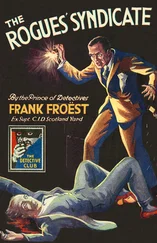‘Avery outlined to me that the transforming agent could hardly be a carbohydrate, did not match very well with a protein and wistfully suggested it might be a nucleic acid!’ At this stage, Dubos, who many years later would write a book about Avery and his work, dismissed this as no more than a surmise. There were good reasons for his caution.
That year few researchers throughout the world believed that the answer to heredity lay with nucleic acids. These chemical entities had been discovered by a Swiss biochemist, Johann Friedrich Miescher, back in the late 1800s. Fascinated by the chemistry of the nucleus, Miescher had broken open the nuclei of white blood cells in pus, and subsequently the heads of salmon sperm, to discover a new chemical compound which was acidic to pH testing, rich in phosphorus and comprised of enormously large molecules. After a lifetime of experimentation on the discovery, Miescher’s pupil, Richard Altmann, would introduce the term nucleic acid to describe Miescher’s discovery. By the 1920s, biochemists and geneticists were aware that there were two kinds of nucleic acids. One was called ribonucleic acid, or RNA, which contained four structural chemicals: guanine, adenine, cytosine and uracil, or GACU. The other was called ‘desoxyribonucleic acid’, or DNA, which was a major component of the chromosomes. They had deciphered its four bases – three identical to RNA, guanine, adenine and cytosine, but with the uracil replaced by thymine – making the acronym GACT. They knew that these four bases consisted of two different pairs of organic chemicals; adenine and guanine being purines, and cytosine and thymine being pyrimidines. They also knew that they were strung together to form very long molecules. At first they thought that RNA was confined to plants while DNA was confined to animals, but by the early thirties this was dismissed when it was found that both RNA and DNA were universally distributed throughout the animal and plant kingdoms. Still they had no knowledge of what nucleic acids actually did in the nuclei of cells.
A distinguished organic chemist based at the Rockefeller Institute, Phoebus Aaron Levene, proposed that the structures of DNA and RNA were exceedingly boring – they formed groups of four bases that repeated themselves in the identical repetitive formation throughout the molecule, like a four-letter word, repeated ad nauseam. This was called ‘the tetranucleotide hypothesis’. Such a banal molecule couldn’t possibly underlie the exceedingly complex basis of heredity. In the words of Horace Freeland Judson, ‘the belief was held with dogmatic tenacity that DNA could only be some sort of structural stiffening, the laundry cardboard in the shirt, the wooden stretcher behind the Rembrandt, since the genetic material would have to be protein’.
Proteins are lengthy molecules made up of smaller organic chemical units known as amino acids. There are 20 amino acids in the make-up of proteins, reminiscent of the number of letters that make up alphabets. If genes were the hereditary equivalents of words, only the complexity of proteins could fashion the words capable of spelling out the narratives. Chemists, and through extrapolation geneticists, not unnaturally assumed that only this level of complexity could possibly accommodate the incredible memory template that the complexity of heredity demanded – a line of thought that Judson labelled ‘The Protein Version of the Central Dogma’.
This was the contentious zeitgeist that Avery now confronted. As early as 1935, in his annual reports to the Board of the Institute, he indicated that he had growing evidence that the ‘transforming substance’ appeared free of capsular polysaccharide and it did not appear to be a protein.
Further progress on this line of research appeared to drag. In part this was because Dubos, working in the same department, had made a breakthrough in his search for antibiotic drugs. In 1925, Alexander Fleming, at St Mary’s Hospital in London, had discovered a potential antibiotic, penicillin, but he had been unable to take his work to the stage of useful production for medical purposes. Now, working on the philosophical principle encapsulated by the biblical saying ‘dust to dust’, Dubos had pioneered the search for microbes in soil that would potentially attack the polysaccharide coat of the pneumococcus. By the early 1930s he was making progress. From a cranberry bog in New Jersey he found a bacillus that dissolved the thick polysaccharide capsule that coated the pneumococcus with its armour-like outer covering. Dubos went on to extract the enzyme that the Cranberry Bog bacillus produced. He and Avery had reported their discovery in a paper in the journal, Science , in 1930. In a further series of papers the two scientists would report further experiments, all aimed at extrapolating the discovery to human trials of the Cranberry Bog enzyme in treating the potentially fatal pneumonia and meningitis caused by the pneumococcus.
But their researches encountered difficulty after difficulty. In part these arose from a predictable ignorance in a field of such pioneering research. A more personal, and devastating, problem arose when, under the stress of it all, Avery developed thyrotoxicosis – a debilitating autoimmune illness in which his thyroid gland became overactive.
Thyrotoxicosis causes the system to be flooded by thyroid hormones, which would have inappropriately switched his metabolism into a dangerous overdrive. He would have felt shaky, agitated, physically and mentally restless, suffering difficulties with relaxation and sleep – an impossible situation for a creative person. Avery had to spend time away from the lab undergoing surgery to remove the bulk of the ‘toxic goitre’, a procedure that carried risk of side-effects, even fatality in a minority of cases. His surgeon advised him against any early activity, physical or mental, that provoked stress. Dubos later recalled how Avery was away from his work for as long as six months. And while Avery was away, the laboratory stagnated. In Dubos’ own words, ‘I … pursued [the research] for three or four years. However I could not carry the work very far because there were serious gaps in both my knowledge of genetics and biochemistry and in the [prevailing] states of these sciences themselves.’
Dubos would continue his researches against such difficulties, to be rewarded, in 1939, with the discovery of the first soil-derived antibiotic. He called it ‘gramicidin’. But gramicidin could not be taken by mouth or administered by injection because it was too toxic. It could only be applied to skin conditions. The research continued. But then, all of a sudden, the hopes of Avery and Dubos were overtaken by a rival breakthrough. Working in the pharmaceutical research laboratories of the Bayer Company in Elberfeld, Germany, doctor Gerhard Domagk reported the discovery of a new antibacterial agent called prontosil. The first of what would come to be known as the sulphonamide drugs, it immediately entered the medical formulary, pioneering the treatment of a number of hitherto untreatable infectious diseases.
Today we are apt to forget how little we could do to control infection in the 1930s. Epidemics such as scarlet fever, measles, pneumonia, meningitis and poliomyelitis swept through the population in regular, sometimes annual, cycles. Other notorious infections were everyday threats, including tuberculosis, which ravaged entire families, or boils, septic arthritis, septic osteomyelitis, which caused agonising abscesses in bone, and the commonplace but potentially deadly streptococci capable of breaking through a septic throat to cause abscesses in the brain. Most of the human population, whether in developed or developing countries, died from infections, including the insidious pneumonias that hit those whose immunity was depressed. The treatment of infections was the most urgent problem then facing humanity. For Dubos, and even more so Avery, the disappointment of failing in their line of research would have been shattering.
Читать дальше












